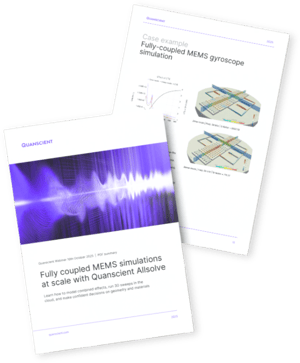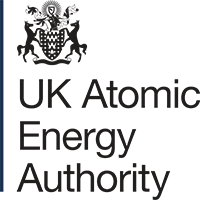Accelerating nonlinear MEMS simulations with the harmonic balance method
See how harmonic balance is leveraged for solving nonlinear periodic problems in frequency domain for quicker, more precise results without transient analysis.
Fully coupled MEMS simulation at scale with Quanscient Allsolve
Learn how to model combined effects, run 3D sweeps in the cloud, and make confident decisions on geometry and materials
Webinar key takeaways
In this webinar, we show how Quanscient Allsolve enables fully coupled MEMS simulation and scalable 3D parametric sweeps on gyroscopes and FBAR—so you can make reliable performance calls faster.
Through real-life examples, you will:
- Learn how to model MEMS devices with combined effects to get realistic performance predictions.
- See how to run multi-parameter sweeps to explore more designs in less time.
- Understand when to choose 3D over 2D, using gyroscopes and FBAR as examples.
- See how to interpret results to make confident decisions on Q-factor, bandwidth, and RF behavior under real conditions.
Who is this for
MEMS engineers, designers, and researchers working on gyros, resonators (FBAR), microspeakers, and array devices who need combined-physics fidelity and accurate results at practical turnaround times.

Example 1: Modal analysis of MEMS Gyroscope
Combined effects of all damping mechanisms (Anchor losses + Squeeze-film + Thermoelastic damping)

Trusted by both industry and academia









Quanscient Allsolve
We'll get back to you within 1 business day.
Request a live demo
In the live demo, we'll
- Explore use cases and workflow integration
- Discuss pricing and value
- Discover features and benefits
We'll get back to you within 1 business day.
